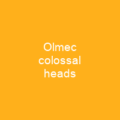Tak’alik Ab’aj: A Gateway to Ancient Maya Civilization
Imagine stepping back in time to the heart of ancient Mesoamerica, where the echoes of a civilization’s rise and fall still resonate through the ruins of Tak’alik Ab’aj. This pre-Columbian archaeological site in Guatemala is more than just stones and artifacts; it’s a window into the complex history and culture that shaped the region.
The Early Days
Occupied by changing ethnic groups, including Olmec, Maya, and Mam, Tak’alik Ab’aj began its journey around 400 BC. The site flourished from the 9th century BC to at least the 10th century AD, serving as a crucial center of commerce with connections to other Mesoamerican sites like Kaminaljuyu and Chocolá.
Architectural Marvels
The site is a testament to ancient engineering prowess. With its sophisticated water drainage system and artificial constructions spread across nine terraces, Tak’alik Ab’aj showcases the ingenuity of its builders. The local vegetation, including Pascua de Montaña, Chichique, Tepecaulote, Caulote or West Indian Elm, Hormigo, Mexican Cedar, Breadnut, Tamarind, and Papaturria, adds to the site’s natural beauty.
Art and Trade
Tak’alik Ab’aj’s economy thrived on cacao production and trade routes. Obsidian, a key material for tools and ornaments, originated mainly from Guatemalan highlands sources. The site features Olmec-style sculptures, Maya royal tombs, and hieroglyphic inscriptions, all of which tell the story of its rich cultural heritage.
Historical Layers
The history of Tak’alik Ab’aj is a layered tapestry of different periods. From the Early Preclassic to the Postclassic, each phase left its mark on the site. The transition between Middle and Early Maya phases was gradual without abrupt changes, reflecting the complex interplay of cultures.
Early Preclassic
The site was first occupied at the end of the Early Preclassic period with residential areas and obsidian recovery. By the Middle Preclassic, Mixe-Zoquean inhabitants had taken over, leaving behind Olmec-style sculptures that hint at a physical presence or shared iconography.
Middle to Late Preclassic
The Terminal Classic saw the replacement of Ocosito ceramics by highland K’iche’ ceramic tradition. The construction of public architecture began in earnest during this period, with clay structures and ceramics showing strong affinities with coastal Escuintla region ceramics.
Early Classic to Late Classic
The Early Classic saw the adoption of stela style across the Maya lowlands, while the Late Classic brought large-scale construction and re-erection of monuments. The Postclassic period was marked by K’iche’ conquest and the introduction of new ceramics.
Excavations and Discoveries
The site has been excavated multiple times, with notable contributions from scholars like Walter Lehmann, J. Eric S. Thompson, Suzanna Miles, Lee Parsons, and Edwin M. Miles. These efforts have uncovered 40 new monuments and led to the official designation of Tak’alik Ab’aj as a UNESCO World Heritage Site in 2023.
Monuments and Stelae
Tak’alik Ab’aj is home to over 304 stone monuments, mostly carved from local andesite boulders. These include the famous Olmec-style colossal head Monument 23, which was recarved into a niche figure. The site also features various stelae sculpted in the early Maya style, with hieroglyphic texts that provide insights into the site’s history.
Notable Sculptures
The Cargador del Ancestro is a unique monument consisting of four fragments that fit together to form a single monumental column. This sculpture predates 300 BC and represents an Early Maya ruler carrying the underworld (bat) and his ancestors.
Stelae
Notable stelae include Stela 1, which features a standing figure holding a serpent sceptre; Stela 2, with damaged Long Count dates and two standing figures facing each other; and Stela 13, dating to the Late Preclassic and featuring a stylized serpentine head similar to Kaminaljuyu.
Royal Burial
A Late Preclassic royal burial tomb has been excavated. Designated Burial 1, this tomb was found during excavations of Structure 7A and is associated with Stela 13 and a massive offering of over 600 ceramic vessels and artifacts.
Conclusion
Tak’alik Ab’aj stands as a testament to the rich cultural heritage of ancient Mesoamerica. Its history, from its early occupation by Olmec and Maya groups to its eventual conquest by Teotihuacan, is a fascinating journey through time. The site’s intricate sculptures, stelae, and royal tombs offer invaluable insights into the lives and beliefs of those who once thrived here. As we continue to explore and understand Tak’alik Ab’aj, we uncover not just ruins but a vibrant tapestry of human history.

You want to know more about Takalik Abaj?
This page is based on the article Takalik Abaj published in Wikipedia (retrieved on November 29, 2024) and was automatically summarized using artificial intelligence.







